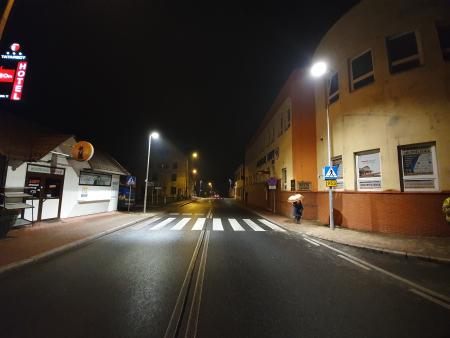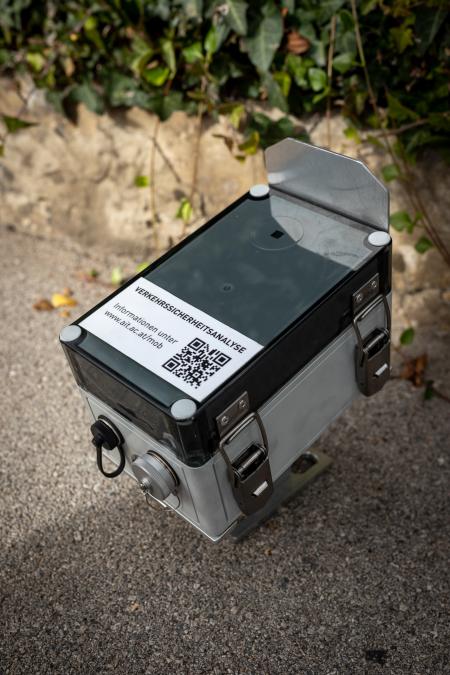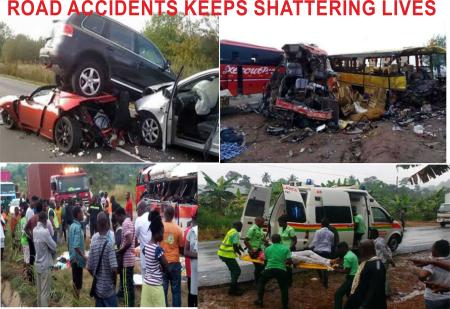Our members are dedicated to improving road safety and sharing their knowledge with the wider community. Here, you can explore our members' good practices – initiatives that have been assessed for their effectiveness in addressing a road safety problem and have proven results.
Get inspired – and sign up to share your good practices too!

Saturday, May 6, 2023
In 2018, an analysis of the causes of road crashes involving pedestrians in the voivodship Małopolskie in Poland found that 68% of such crashes occurred in the vicinity of pedestrian crossings. The Małopolska Voivodship Police Headquarters in Cracow undertook a detailed assessment of the illumination of and road markings at pedestrian crossings for the whole region. The study identified a large number of deficiencies, especially related to illumination. The official statistics confirmed the high risk for pedestrians on pedestrian crossings.

Wednesday, May 3, 2023
Data oriented and supported measures to protect vulnerable road users by understanding behavioural aspects at different infrastructural sections is mandatory for professional and successful pro-active road safety work. Usual data collection within the road safety sector is provided by short-timed data collection by hand or police-initiated reports after crashes happened. For better results in research and infrastructure planning, much more data over longer timespans is needed to provide better understanding on traffic flow mechanics, human behaviour and infrastructural effects on both former topics.
With the Mobility Observation Box (MOB) an image sensor based solution to collect, measure and evaluate trajectory data that integrates seamless into traffic flows without interfering them was developed to overcome the data collection issues. MOB is able to collect data for up to 14 consecutive days on-site with machine learning based post-processing of relevant safety KPIs such as TTC and PET. The technology is battery-powered and can be mounted nearly everywhere due to its lightweight.
With the Mobility Observation Box (MOB) an image sensor based solution to collect, measure and evaluate trajectory data that integrates seamless into traffic flows without interfering them was developed to overcome the data collection issues. MOB is able to collect data for up to 14 consecutive days on-site with machine learning based post-processing of relevant safety KPIs such as TTC and PET. The technology is battery-powered and can be mounted nearly everywhere due to its lightweight.
Tuesday, May 2, 2023
Years before, "fleet size" was the only criteria to prioritize risk. Focus was mainly on countries with bigger fleets, where audits, programs reviews and inspections were continuously and repeatedly performed. With the combination of multi input of data like: program review & audit scores, last audit performed, SAFE FLEET Team presence, fleet size, vehicle ownership, performance (CPMM and IPMM), BTW completion, High Risk Drivers %, SIF-p, we were able to identify and predict more accurate where risk resides and finally define good/strong strategic action plans.

Saturday, April 29, 2023
Apart from the bad road network and climatic conditions, other causes of road accidents on some of the roads have been linked to negligence of drivers and mechanical errors. other courses of road accidents include drink driving, faulty traffic light, faulty streetlight, highway attackers, fake engine oil, fake brake fluid, mechanical error, potholes. overloading, poor eyesight, Insufficient lighting conditions; unlit roads pose danger to motorists, pedestrians and cyclists, including threat to security.
A vehicle manufacturers document shows that, vehicles are equipped with 4 brakes to provide utmost safety on the roads, but our cheeks showed most drivers of commercial vehicles have disconnected 2 of these brakes, posing danger on the roads. Also, worn-out tyres affect the performance of vehicles.
A vehicle manufacturers document shows that, vehicles are equipped with 4 brakes to provide utmost safety on the roads, but our cheeks showed most drivers of commercial vehicles have disconnected 2 of these brakes, posing danger on the roads. Also, worn-out tyres affect the performance of vehicles.

Friday, April 28, 2023
V sobotu 29. dubna pořádáme další akci k zahájení cyklosezóny. Přijďte od 10 do 16 hodin na dětské dopravní hřiště v Komíně (ulice Pastviny) a otestujte svoje dovednosti na kole nebo koloběžce. Provoz houstne a je důležité si připomínat svoji bezpečnost. Na děti navíc čekají krásné odměny.
Akci pořádáme ve spolupráci s Magistrátem města Brna.
Akci pořádáme ve spolupráci s Magistrátem města Brna.